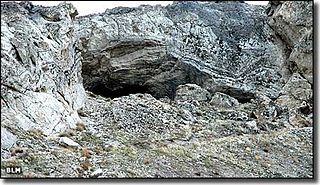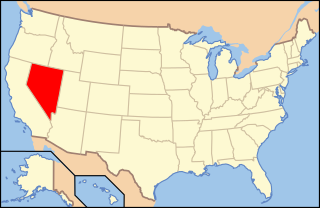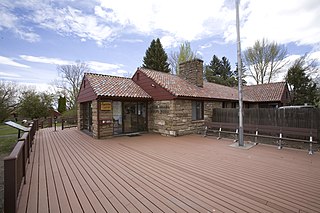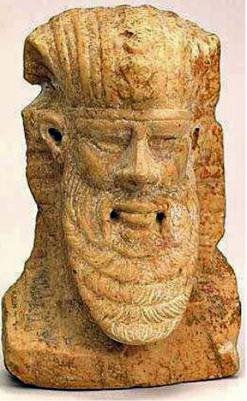
The Native American Graves Protection and Repatriation Act (NAGPRA), Pub. L. 101-601, 25 U.S.C. 3001 et seq., 104 Stat. 3048, is a United States federal law enacted on November 16, 1990.

Sarah Hopkins was a Northern Paiute writer, activist, lecturer, teacher, and school organizer. Her Northern Paiute name was Thocmentony, also spelled Tocmetone, which translates as "Shell Flower."

The Northern Paiute people are a Numic people that has traditionally lived in the Great Basin region of the United States in what is now eastern California, western Nevada, and southeast Oregon. The Northern Paiute pre-contact lifestyle was well adapted to the harsh desert environment in which they lived. Each tribe or band occupied a specific territory, generally centered on a lake or wetland that supplied fish and waterfowl. Communal hunt drives, which often involved neighboring bands, would take rabbits and pronghorn from surrounding areas. Individuals and families appear to have moved freely among the bands.

Body snatching is the illicit removal of corpses from graves, morgues, and other burial sites. Body snatching is distinct from the act of grave robbery as grave robbing does not explicitly involve the removal of the corpse, but rather theft from the burial site itself. The term 'body snatching' most commonly refers to the removal and sale of corpses primarily for the purpose of dissection or anatomy lectures in medical schools. The term was coined primarily in regard to cases in the United Kingdom and United States throughout the 17th, 18th, and 19th centuries. However, there have been cases of body snatching in many countries, with the first recorded case dating back to 1319 in Bologna, Italy.

The Spirit Cave mummy is the oldest human mummy found in North America. It was discovered in 1940 in Spirit Cave, 13 miles (21 km) east of Fallon, Nevada, United States, by the husband-and-wife archaeological team of Sydney and Georgia Wheeler. Analysis of the remains showed similarities to North and South American indigenous peoples and in 2016, the remains were repatriated to the Fallon Paiute-Shoshone Tribe of Nevada. The Spirit Cave mummy was one of the first to be dated using accelerated mass spectrometer radiocarbon dating. In turn, its discovery and analysis gave much insight and motivation of further research into the chronology of the western great basin.

Archaeological looting in Iraq took place since at least the late 19th century. The chaos following war provided the opportunity to pillage everything that was not nailed down. There were also attempts to protect the sites such as the period between April 9, 2003, when the staff vacated the Iraq Museum and April 15, 2003, when US forces arrived in sufficient numbers to "restore some semblance of order." Some 15,000 cultural artifacts disappeared in that time. Over the years approximately 14,800 were recovered from within and outside Iraq and taken under the protection of the Iraqi government.

Looted art has been a consequence of looting during war, natural disaster and riot for centuries. Looting of art, archaeology and other cultural property may be an opportunistic criminal act or may be a more organized case of unlawful or unethical pillage by the victor of a conflict. The term "looted art" reflects bias, and whether particular art has been taken legally or illegally is often the subject of conflicting laws and subjective interpretations of governments and people; use of the term "looted art" in reference to a particular art object implies that the art was taken illegally.

Fort Rock Cave was the site of the earliest evidence of human habitation in the US state of Oregon before the excavation of the Paisley Caves. Fort Rock Cave featured numerous well-preserved sagebrush sandals, ranging from 9,000 to 13,000 years old. The cave is located approximately 1.5 miles (2.4 km) west of Fort Rock near Fort Rock State Natural Area in Lake County. Fort Rock Cave was declared a National Historic Landmark in 1961, and added to the National Register of Historic Places in 1966.
Billy Chinook was a chief and member of the Wasco tribe. Chinook was a guide for John C. Frémont and Kit Carson, who explored Central Oregon from 1843 to 1844 and from 1845 to 1847. Chinook also served as First Sergeant, U.S. Army Wasco Scouts during the Snake War. Lake Billy Chinook in Oregon is named in his honor.

Cueva de la Candelaria is an archaeological site located the Mexican state of Coahuila. It is a cave that was used as cemetery by nomad visitors. Early site research was made in 1953 and there was a later season in 1954. As a result of these investigations, many materials were recovered and are kept by Instituto Nacional de Antropología e Historia (INAH).

Lovelock Cave (NV-Ch-18) is a North American archaeological site previously known as Sunset Guano Cave, Horseshoe Cave, and Loud Site 18. The cave is about 150 feet (46 m) long and 35 feet (11 m) wide. Lovelock Cave is one of the most important classic sites of the Great Basin region because the conditions of the cave are conducive to the preservation of organic and inorganic material. The cave was placed on the National Register of Historic Places on May 24, 1984. It was the first major cave in the Great Basin to be excavated, and the Lovelock Cave people are part of the University of California Archaeological Community's Lovelock Cave Station.
The Cedarville Rancheria is a federally recognized tribe of Northern Paiute people in Modoc County, California, about 30 miles (48 km) south of the Oregon border. Cedarville Rancheria is 26 acres in Cedarville. The tribal headquarters is located 20 miles away from the Rancheria in Alturas. The tribe has an environmental protection agency that is dedicated to keeping the Rancheria clean and teaching children how to protect and care for the planet.

Paleontology in Nevada refers to paleontological research occurring within or conducted by people from the U.S. state of Nevada. Nevada has a rich fossil record of plants and animal life spanning the past 650 million years of time. The earliest fossils from the state are from Esmeralda County, and are Late Proterozoic in age and represent stromatolite reefs of cyanobacteria, amongst these reefs were some of the oldest known shells in the fossil record, the Cloudina-fauna. Much of the Proterozoic and Paleozoic fossil story of Nevada is that of a warm, shallow, tropical sea, with a few exceptions towards the Late Paleozoic. As such, many fossils across the state are those of marine animals, such as trilobites, brachiopods, bryozoans, honeycomb corals, archaeocyaths, and horn corals.
The Antiquities Law of the State of Israel of 1978 was put in place by Israel to eliminate the problem of illegal activities with artifacts. It serves the purpose of describing the rights and obligations regarding the discovery and ownership of ancient coins or other antiquities in Israel, and the possibility of export of these antiquities. The punishment for breaking this law includes imprisonment for a term of two years or a fine of 100,000 pounds. It nationalized antiquities as an attempt to protect them.
Subhash Kapoor is an Indian American art smuggler who was convicted for running a $100 million international smuggling racket. He was previously the owner of the Art of the Past gallery in Manhattan. His sister business, Nimbus Import/Exports, specialised in selling antiquities from across the Indian Subcontinent and Southeast Asia to major museums around the world.

On January 2, 2016, an armed group of right-wing militants seized and occupied the headquarters of the Malheur National Wildlife Refuge in Harney County, Oregon, and continued to occupy it until law enforcement made a final arrest on February 11, 2016. Their leader was Ammon Bundy, who participated in the 2014 Bundy standoff at his father's Nevada ranch. Other members of the group were loosely affiliated with non-governmental militias and the sovereign citizen movement.

The 2011 Montreal Museum of Fine Arts theft took place in two separate incidents during September and October of that year. In both instances, the same thief took a small ancient stone piece that was openly exhibited, without a protective case, and smuggled it out of the museum. One has since been recovered; however, the thief remains unidentified and the whereabouts of the other is not known.

The Outsider (2018) is a horror novel by the American author Stephen King. The novel was published by Scribner.
The 2019 Nevada killing spree was a series of murders in January 2019 in which an assailant broke into three homes in Douglas and Washoe Counties in northwestern Nevada, murdered the elderly inhabitants, and made off with valuables. Reports of the crimes terrified area residents for several days until a police manhunt identified and apprehended Wilber Ernesto Martinez-Guzman. The sheriff's report states that Martinez-Guzman later confessed.
Walter Runke was an American politician from Arizona. He served two terms in the Arizona State Senate during the 7th and 8th Arizona State Legislatures, holding the seat from Coconino County.














